Purple Martins
Purple Martins are listed as a species of Special Concern and are closely monitored. They eat insects, and due to pesticides causing a decrease in insect numbers and also because of habitat loss, the effect on purple martins has had an impact on their population.
Martins make a 5,000-mile flight twice a year between their nesting sites in North America and their wintering habitat in South America. 'Landlords' who own Purple Martin houses keep a close watch for their return each spring.
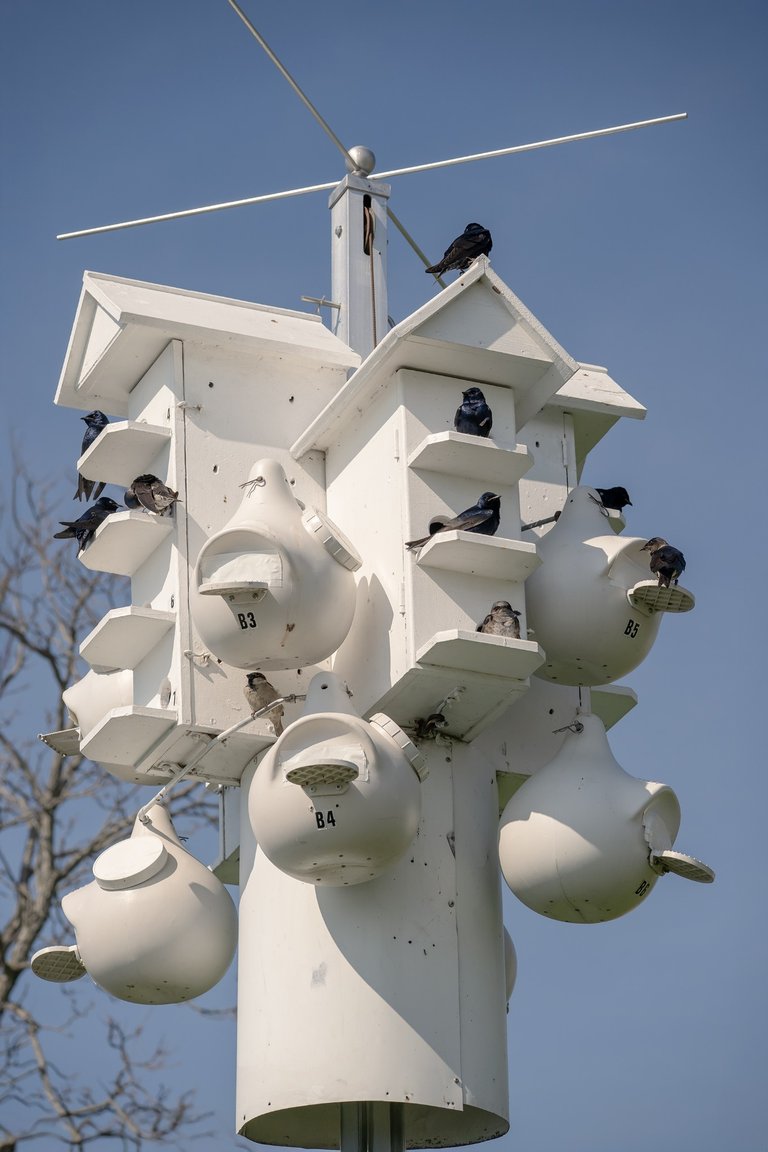
Purple Martins are the only bird species in eastern North America that is totally dependent on humans for supplying it with nesting sites. They nest in colonies, and even after nesting season is over they roost together at night. A friend has a Martin house and spends a lot of time care taking. She lowers it once a week to inspect that all is well and remove any unwanted nests.
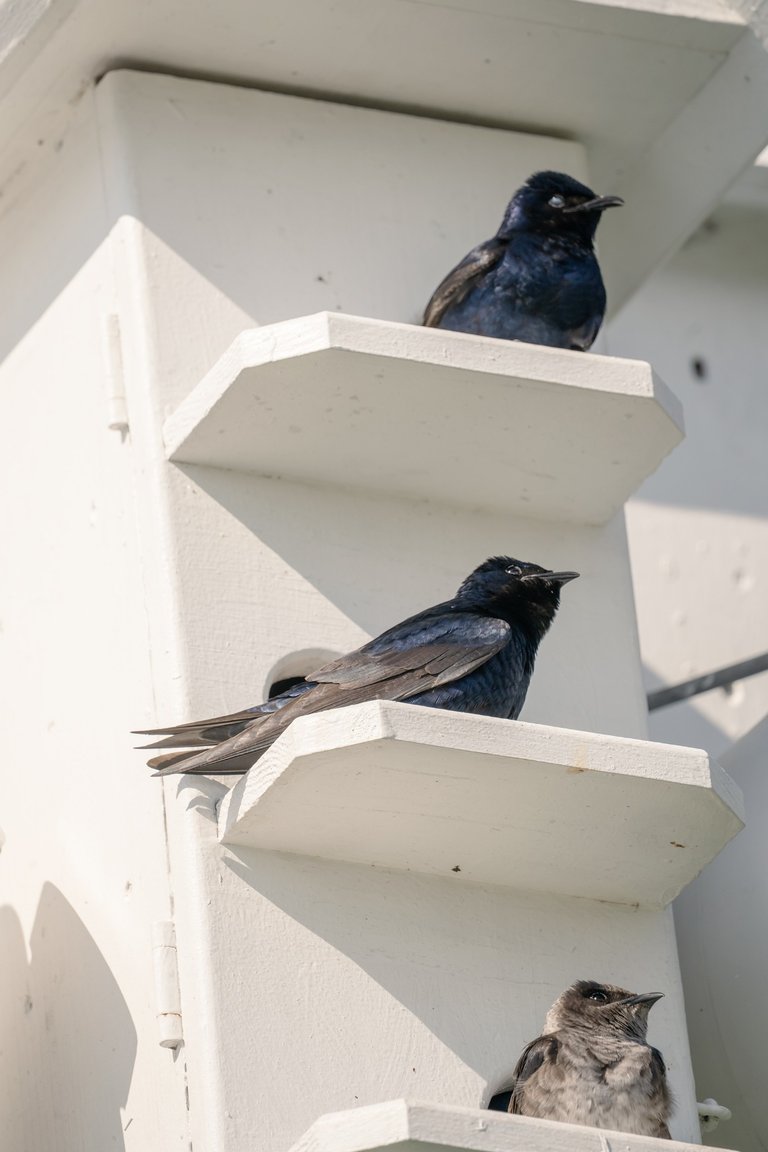
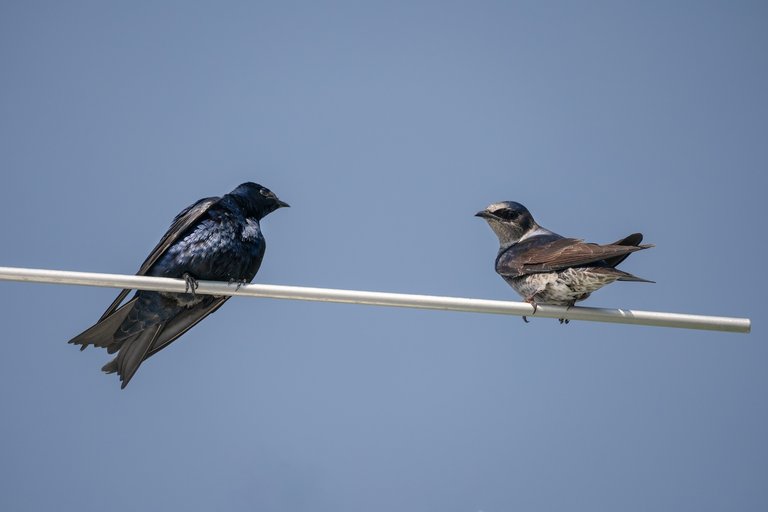
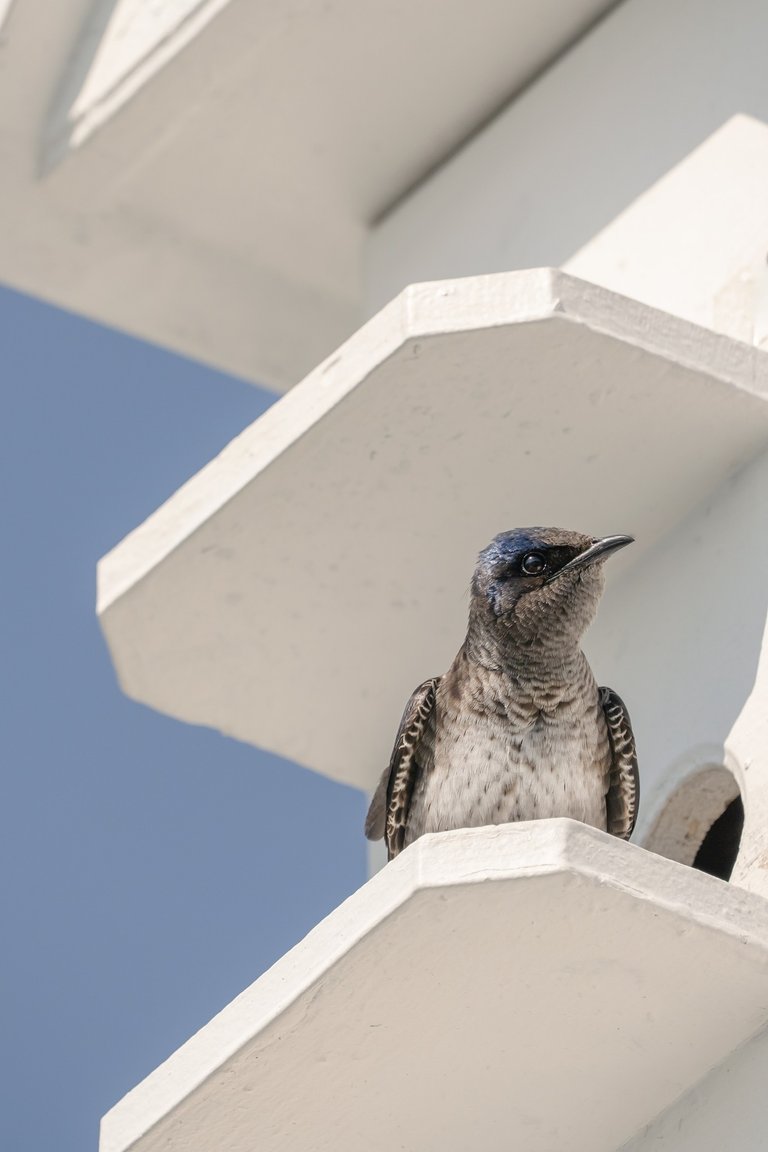
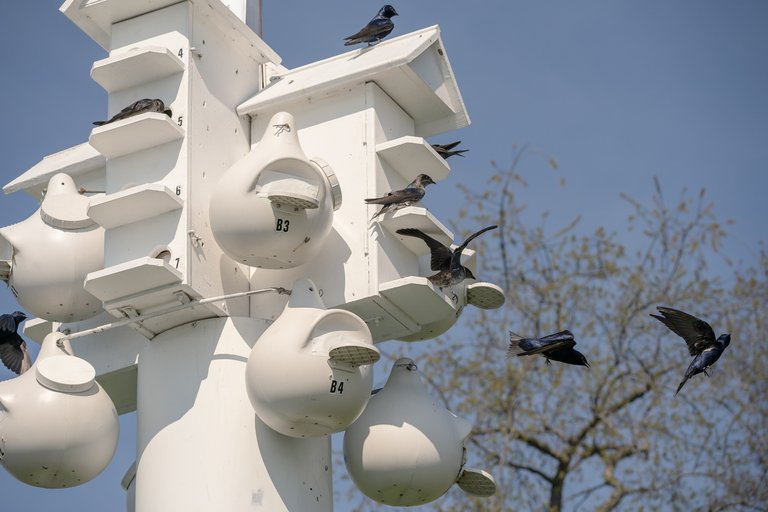
Purple Martin's are a joy to have around, they delight us with musical chatter and deliver amazing aerial stunts.
I love watching the birds in flight swooping and performing their acrobatics.


!PIZZA
$PIZZA slices delivered:
@pixresteemer(1/5) tipped @melinda010100
Come get MOONed!
How beautiful they are!😍😍😍
They are fun birds to watch!
Yes dear
I find it interesting that they depend so much on human intervention for their nesting sites in the north. It's something I didn't know.
GIF's source: "Explore the migration of species in Colombia and nature's beauty"
I read that if a Martin house is positioned too far away from human habitat they won't use it. Maybe they appreciate human outdoor activity to keep insects stirred up out of the grass? They seem to be very human dependent!
That's an impressive birth house!!
There is an Amish company in Pennsylvania that specializes in building the houses.
Very nice photos. Look at the bird couple, they are so sweet :)
Thanks They are delightful birds!
You're welcome :)
We do similar for Osprey in the UK, as the birds fly down to Liberia on the west coast of Africa and they return each year to various sites in Europe, England and right up into Scotland.
There are platforms built for Osprey nests here, too. In the winter they migrate to more tropical areas.
The birds are so lovely and absolutely captivating.
I was amazed seeing their unique and beautiful house. It's definitely impressive!! 💖
It's like an apartment house!
Really amazing!! It's the first time I've seen a bird's house like that, even just in photo but it's stiil looks so beautiful. I even showed it to my daughter and my husband. And they're both impressed. 😊👍👍❤
This is my friend's Martin house. They cost well over $200 to purchase, not counting the pole and pulley system to raise and lower it.
the third and fourth pictures really amazed me. the shots are right on target, when they are posing beautifully. l miss great posts like this in my community, mom join with me on #natureobserver 😁
I will post to your community and send others, too!
I'm waiting💞
I know that this species of birds is known to live in colonies, often in artificial houses provided by humans. The first photo you put in this post testifies to what I wrote. !LUV
You are right. They are interesting birds!
Some interesting and new information I got today.
I didn't know that there is something called Martin house!
Thanks for interesting post!
!ALIVE
I learned new things about Purple Martin's while writing this post!
Very nice birds. Are you using your Pixel, or do you catch them with the camera?
These were taken with my kids Sony camera with a zoom lens.
Yes, I thought it was a camera. If I zoom in on birds with my Pixel, the photo looks too artificial :)
The photos in the Before the Smoke were Pixel
Wow, it's amazing, the swiftlets are so beautiful, and having their own beautiful house with a very nice design, the swiftlets must be very calm.That's very interesting mom ❤️🙏
They have their own apartment complex and a landlord to take care of maintenance! 😁
Cute!
Thank you!
Some facts about birds I didn't know about. Never imagined a bird was human dependent. How beautiful the houses built for them.
I knew they lived in bird houses that people put up but until I did some research for this post I didn't realize how dependent they are on having these apartment houses.
Me encanta ver estos post suyos. Siempre descubro nuevas y hermosas especies.
Gracias por esos purple Marlins
Gracias! There are so many beautiful birds in our world!
I've never had a martin house, but I do find it all fascinating.
The last house I lived in, at the back of my backyard was the backyards of the houses facing the street around the corner. The one next to mine had an old dilapidated martin house on a high pole that had belonged to some previous owners. Even in bad condition, some martins still lived in it.
New houses can cost well over $200
There is an Amish company on PA that builds and sells them.
I read that Native Americans were hanging gourds for Martins to nest in back in the 1700s.
My Aunt and Uncle next door have a big... pole? that has multiple hooks on it and they hang something that looks like different colored gourds on it. I don't "think" the gourds are real, I think they are plastic of some kind (but I could be wrong?). Unfortunately there is a big workshop between my windows and the field it is in, so I never get to see if there is activity.
I guess that makes sense where that idea came from now.
It would be interesting to know if anything besides sparrows use the 'gourds' .
https://www.reddit.com/r/birdwatching/comments/1l2eicp/purple_martins/
This post has been shared on Reddit by @yale95reyra through the HivePosh initiative.